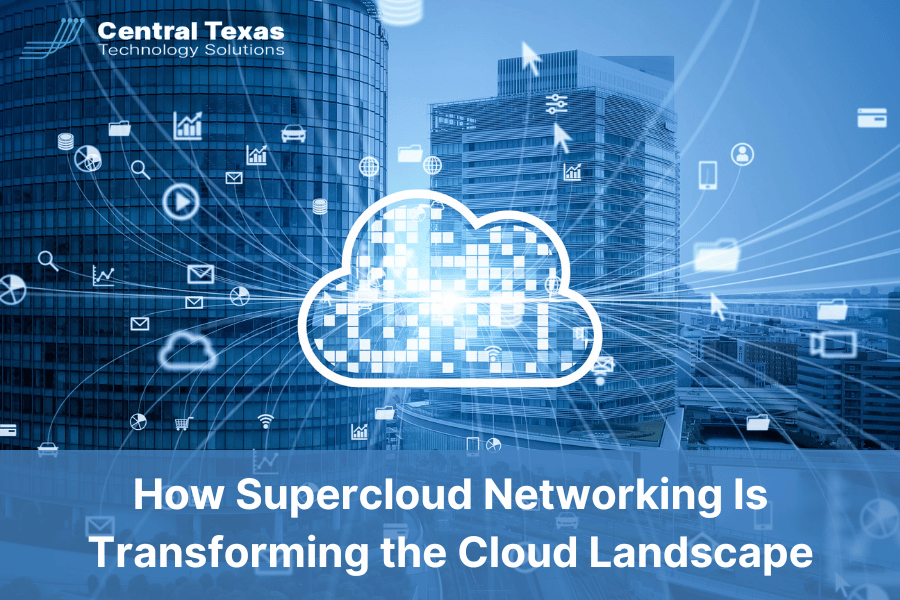
As businesses evolve, so do the technologies they rely on to stay competitive. Supercloud networking represents the next stage in cloud innovation, promising to revolutionize how companies store, manage, and secure data. But what exactly is supercloud networking, and why should it matter to your business?
What Is Supercloud Networking?
Supercloud networking builds on the existing multi-cloud framework by integrating disparate cloud environments into one seamless system. Unlike traditional multi-cloud setups—where private, public, and edge clouds operate independently—supercloud aims to unify these platforms, allowing unprecedented flexibility and efficiency in data management.
A Brief History of Cloud Evolution
To understand the significance of supercloud networking, let’s take a look back at its predecessors:
- Traditional On-Premises Infrastructure: Businesses relied on in-house servers, which often resulted in high costs and vulnerability to outages, damage, or theft.
- The Hybrid Cloud: Companies transitioned to a mix of physical servers and cloud platforms, balancing scalability with the familiarity of local storage.
- The Multi-Cloud Era: Businesses embraced the flexibility of hosting workloads across multiple cloud providers, reducing dependency on any one system.
Supercloud networking takes these advancements further by addressing the limitations of existing cloud systems.
How Supercloud Networking Works
Supercloud networking leverages an abstraction layer that sits atop individual cloud platforms like Amazon EC2, Microsoft Azure, and Google Compute Engine. This abstraction layer standardizes application programming interfaces (APIs), allowing seamless communication and workload mobility across clouds.
Key Features of Supercloud Networking:
- Unified Management: Overcomes the complexity of managing multiple cloud environments.
- Global Connectivity: Relocates virtual machines effortlessly across regions.
- Streamlined Data Transfers: Shifts data between providers without reconfiguration.
Why Supercloud Networking Matters for Businesses
The benefits of supercloud networking extend far beyond operational convenience. Here’s why it’s a game-changer:
Simplified Operations
- Centralized management eliminates the need to juggle multiple tools for different cloud platforms.
- Automates data transfers, saving time and reducing the risk of human error.
Enhanced Security
- Integrates advanced proxy-based solutions to guard against cyber threats, including bots and DDoS attacks.
- Maintains robust security protocols across all connected cloud environments.
Cost Efficiency
- Dynamically scales resources to match business needs, avoiding unnecessary spending.
- Optimizes workloads to ensure you’re only paying for what you use.
Scalability and Innovation
- Supports complex workflows with ease, paving the way for innovative business models.
- Bridges the gaps between current multi-cloud setups to enable smoother transitions as businesses grow.
The Road Ahead for Supercloud Networking
While supercloud networking remains in its developmental stages, the demand for its capabilities is undeniable. In 2024 alone, businesses are expected to spend $1 trillion on cloud computing, underscoring the urgent need for solutions that simplify and enhance cloud operations.
Why Businesses Should Prepare Now
By adopting supercloud networking, forward-thinking companies can:
- Stay ahead of competitors by embracing cutting-edge cloud innovations.
- Build more resilient and secure infrastructures.
- Unlock new efficiencies that drive down costs and improve performance.
FAQ About Supercloud Networking
1. How is supercloud networking different from multi-cloud setups?
Supercloud networking unifies disparate clouds under a single management layer, simplifying operations and enabling seamless data transfers.
2. What industries would benefit most from supercloud networking?
Industries with complex data needs, such as finance, healthcare, and e-commerce, are poised to gain the most from supercloud networking’s streamlined operations and enhanced security.
3. Is supercloud networking available now?
Although still in development, its foundational technologies are being tested, and businesses should watch for early adoption opportunities in the coming years.
Contact CTTS today for IT support and managed services in Austin, TX. Let us handle your IT so you can focus on growing your business. Visit www.CTTSonline.com or call us at (512) 388-5559 to get started!
